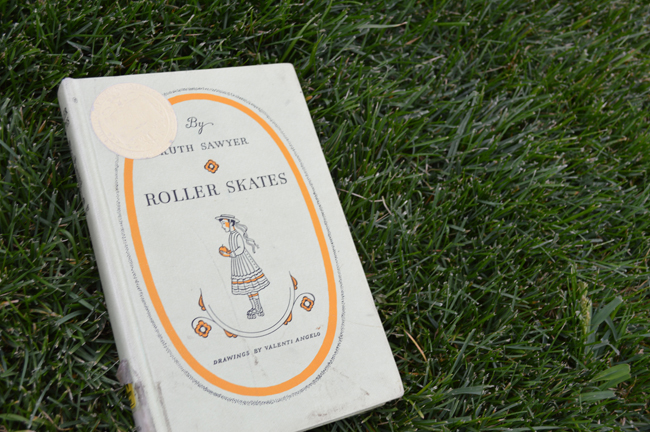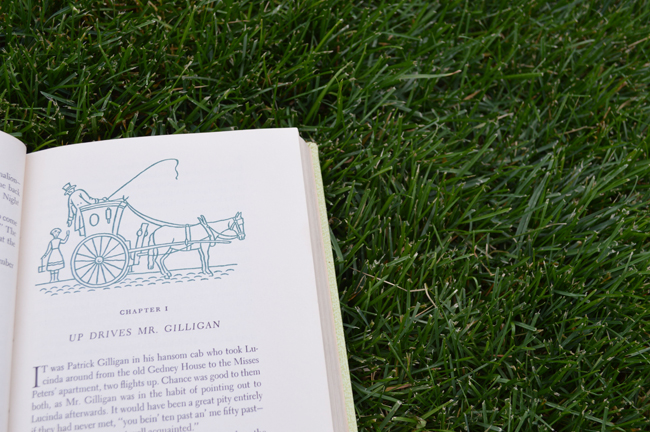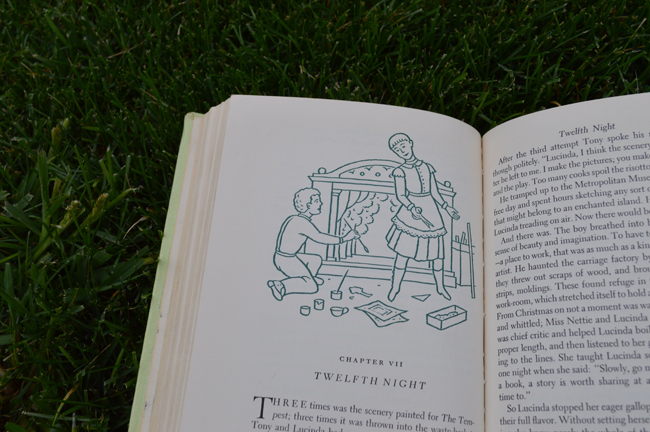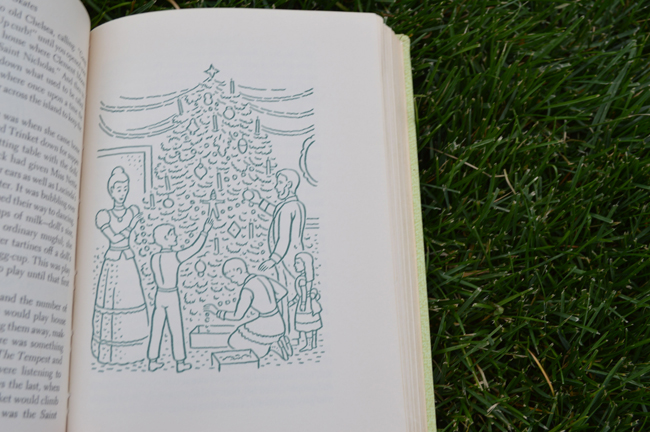This week’s Newbery, Roller Skates by Ruth Sawyer, features feisty 10 year-old-Lucinda, who is a bit like if Anne Shirley (of Green Gables) got stuck in Manhattan with a pair of roller skates. Set in the 1890s, affluent and inadvertently-troublemaking Lucinda has a year of freedom when her parents go to Italy for their health. They leave Lucinda in the care of two spinster teachers, Miss Nettie and Miss Peters, who pretty much seem to let Lucinda run (or roll) wild. Lucinda skates all over New York making friends with a wide cast of characters—an Italian fruit seller, a beautiful and mysterious Asian “princess,” the daughter of a to-be famous violinist, an Irish cab driver, a homeless rags and bottle man, a family of actors, and her stuffy Aunt Emily’s new husband—the Shakespeare loving Uncle Earl.
What I liked. The characters in this book were just amazing. They were funny and vivid. They were varied and authentic. The characters were the whole book, which was mostly just Lucinda going to meet people and having witty exchanges about life lived from so many different perspectives. I was just so impressed with Sawyer’s ability to easily create and introduce so many wonderful characters.
What was interesting. Lucinda loves to read, and I thought that the list of books she gives as her favorite was a fascinating glimpse into 19th century (and perhaps older) children’s literature: Tanglewood Tales, The King of the Golden River, Plutarch’s Lives, Hans Andersen, Adventures in Wonderland, The Peterkin Papers, Uncle Remus, Jan of the Windmill, Robin Hood, Swiss Family Robinson, The Princess and Curdie, Our Boys in India, At the Back of the Northwind (p. 21) I’ve really only read a few of these but Lucinda did seem to really love them, and it makes me interested in them.
What were some limitations. For me, the plot kind of petered out about 2/3 of the way through. I felt like things were mostly holding together until right after the performance of The Tempest, but then I didn’t really understand why characters were dying and what we were moving toward. Overall, Lucinda is a character like a butterfly, always going from one adventure to the next, and the narration had that quality as well. Sometimes, that added to the charm of the book, but I think in the end it really held it back that there wasn’t a stronger sense of where the book was going with purpose. Also, I am still confused about the prologue—who was writing this and why were they picturing Lucinda in her skates? Skip the prologue, but definitely still read this book to meet the wonderful Lucinda.
Why I think it’s a Newbery/Similarity to other Newbery winners. Lucinda is a great strong female character, joining the ranks of Caddie Woodlawn and Louisa May Alcott in Invincible Louisa. It was set in America, but it had a lot of immigrant characters who had accents and different cultures. I wonder if we’ll see more of the child protagonist in the big multicultural city in later Newberies.
What it teaches me as a writer. I just was so amazed at how Sawyer did her character introductions. She put people into a setting, let Lucinda have a few thoughts about them in their setting, described their appearance, and just like that, you could seem them. I think that JK Rowling and Neil Gaiman also have this skill. Here’s an example from when Lucinda rides home with Mr. Gilligan to have special Irish griddle and currant bread after talking about how much Lucinda loved her Irish maid Johanna:
“They found Mrs. Gilligan greasing the griddle and washing the currants. Lucinda went into the kitchen to help and explained to Mrs. Gilligan that she was glad that they didn’t have a dining room, she never yet had eaten griddle bread outside a kitchen, and she never could. Mrs. Gilligan was round as a dumpling, red as an apple; her hair was combed upwards and ended in a doughnut on top of her head. She called Lucinda ‘wee lamb’ and Lucinda got jumbled in her thinking, trying to decide whether Mrs. Gilligan looked like Johanna grown old, or Johanna looked like Mrs. Gilligan grown young.” (p. 80 & 81)
Sawyer uses all the descriptive similes to accent the kitchen (dumpling, apple, donut, lamb), and the kitchen setting accents the nurturing warmth of the women. Add Lucinda’s charming prattle and love of Mrs. Gilligan, and it makes the audience love Mrs. Gilligan all the more.
Have you read Roller Skates? Who is your favorite feisty female protagonist?
*Note* This post contains Amazon affiliate links, which means if you were to buy a book, I’d get a tiny commission at no cost to you. Thanks for supporting Stories & Thyme!*







